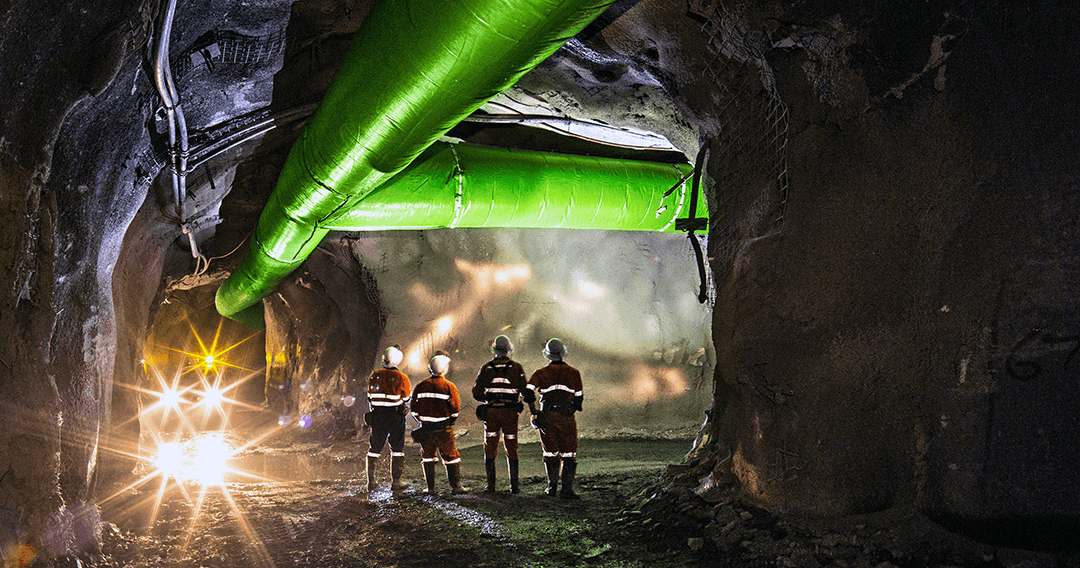Mining is one of the world’s most dangerous industries. Workers face life-threatening hazards daily, both above and below ground. Mining companies have turned to digital transformation and the latest developments in machine automation, artificial intelligence, machine learning, robotic rescue devices, and equipment that employs sensors to warn workers of unsafe conditions — all of which aim to improve worker safety and boost productivity. Let’s explore just a few of these developments:
From Automation to Autonomous
Miners use huge trucks, the largest in the world, to move ore from the mine to a conveyor or a drop point. However, as mining executives look for ways to increase productivity and worker safety, the idea of controlling those trucks remotely rather than with human drivers began to take shape in the mid-1990s. Today, because technology has caught up with those ideas, some mining companies employ remote “drivers” who control those trucks using a device not much different than an XBox or Gameboy controller. These remote drivers work in air-conditioned offices, often hundreds of miles away from the mine.
The American Society of Mechanical Engineers (ASME) points out that, “Although human drivers can do the job, autonomous trucks are able to drive an exact route every time without getting bored, tired, or taking time off. That elimination of human error and regular training improves safety and increases a mine’s productivity.”
Robotic Rescue Devices
In working conditions where human workers are needed, robot devices are essential to ensure that if someone is hurt/injured underground, they can be rescued safely without posing risk to other miners or the working environment.
Remotec developed a tracked robot with a manipulator arm capable of moving heavy obstacles as well as people. Dubbed “Andros Wolverine,” it can navigate through an underground mine in conditions that might pose danger to rescue workers. A long fiber optic cable allows the operator to gather real-time information such as video and concentrations of toxic gases.
The Sarcos company, a subsidiary of Raytheon, modified a snake-like robot to help rescue workers. Following any large-scale fire or explosion in a mine, operators usually drill a borehole, then drop a video camera into the hole so they can see the conditions at the distant end. Sarcos, however, modified its snake robot, which can travel up to 2,000 feet at 2 MPH within the mine opening, including the ability to navigate around obstacles, mud, and standing water. The snake fits into a 4-inch borehole and can detect oxygen and noxious gas levels and temperature, giving rescue workers information they need to devise rescue plans.
Sensored Mining Equipment
Mining is often done in environments where visibility is reduced, workspaces are confined, other workers may not be visible when they’re working around corners or when controlling many machines at once, and, with poor lighting, it’s often difficult to gauge the speed at which vehicles and mining machines travel. Mixing people and powerful machinery in this dangerous environment leads to injuries, which is why mining companies have embraced equipment that uses sensors to protect workers.
For example, the Mining Safety and Health Administration (MSHA) has worked with the industry to produce systems that send a warning to a machine operator or a mine worker when the system detects an obstacle, another vehicle, or a person in the machine’s path. These machine sensors built into mining equipment create an electromagnetic field around the machine. When a worker approaches the machine, a body-worn device issues a warning and, depending upon the make of the system, may also stop the machine. This tech-enabled protection is required under Federal law, and it can effectively protect workers from injury.
Another type of sensor — pressure sensors — have been standard in mining for decades. Today though, they’re finding their way into haul trucks, excavators, and other heavy equipment. For example, differential pressure devices monitor air circulation, and if a differential pressure appears across the filters, the devices will notify this before posing a major risk to workers.
Not to be overlooked, radio-frequency identification (RFID) tags affixed to mineworkers’ clothing serve to track workers throughout the mine in real-time. An array of RFID readers affixed at various locations throughout the mine can “read” each employee as they come into range of the reader. This gives management a clear understanding of who is in the mine, where they are at each moment, which is critical information in case of an emergency.
Putting Safety Top of Mind
Because mining is so inherently dangerous, there’s an ongoing need to engage frontline mining workers so they can drive culture changes that lead to greater safety.
Here at Anvl we work tirelessly to advance the use of technology and safety management software so that mining companies can not only grow their productivity but also apply 21st century solutions to keeping workers safe. Our mobile workforce procedure and communication platform eliminates the paperwork involved with inspections, assessments, checklists, observations, audits, permits, and procedures. It puts all of them into dynamic workflows that make your workforce more productive and provide solutions in real-time even when connectivity is threatened or lost. See how our solutions can increase worker safety in mining by connecting with one of our experts.



